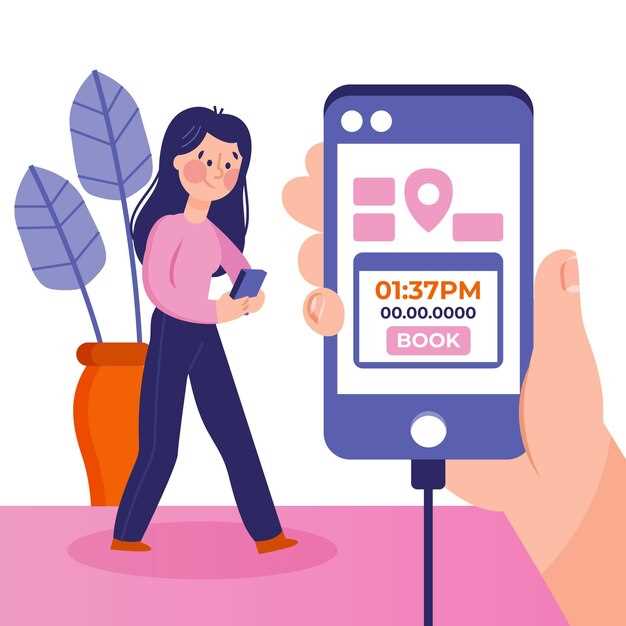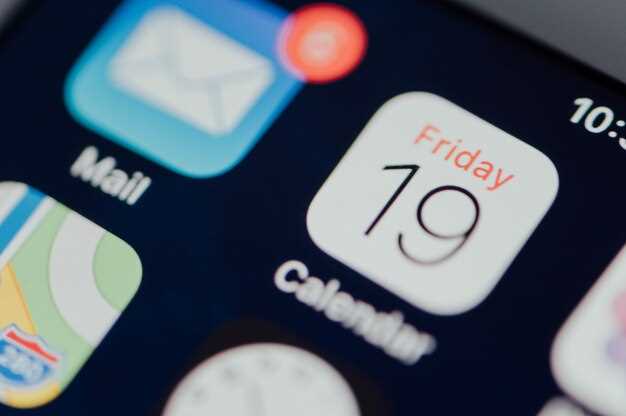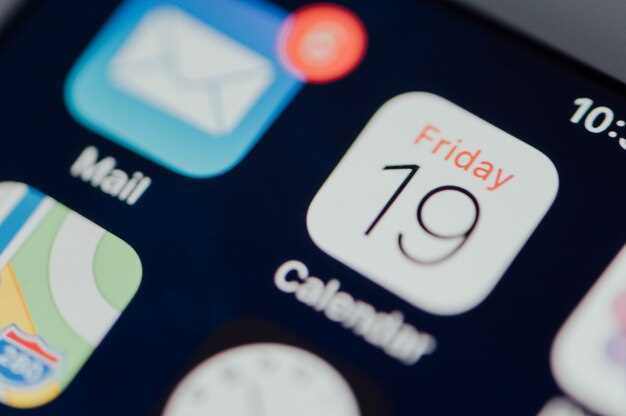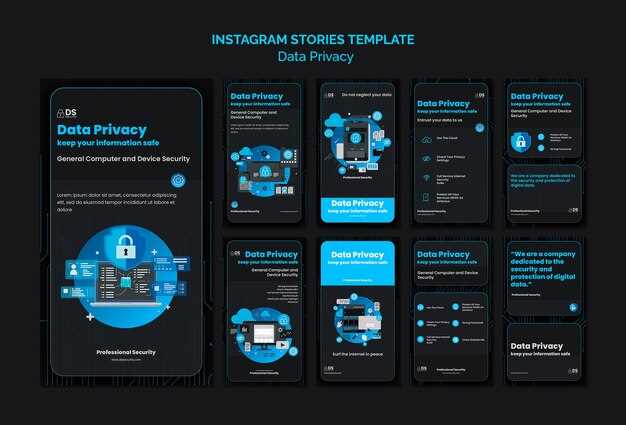Utilizing push notifications can significantly increase user engagement and retention for your mobile app. By sending timely and personalized messages, you can prompt users to take specific actions, enhancing their overall experience. Data shows that apps with push notifications experience a 90% higher engagement rate compared to those without.
Segment your audience to tailor messages effectively. By dividing your users based on behaviors, preferences, or demographics, you can craft targeted notifications that resonate with different groups. For instance, sending personalized offers to frequent buyers can drive sales and foster loyalty. Statistics indicate that personalized messages can boost conversion rates by as much as 10%.
Timing plays a pivotal role in the success of your push notifications. Analyze user activity patterns to determine the optimal moments for sending messages. For example, notifying users during lunch hours or evenings when they are most active can yield better results. Furthermore, adopting a strategy that balances frequency is key; too many notifications can lead to user fatigue and uninstalls, while too few can result in lost engagement opportunities.
Experiment with different message types to see what resonates most with your audience. From promotional offers to helpful tips, testing various formats can provide insight into user preferences. Collecting feedback and analyzing performance metrics from each campaign will guide your strategy, ensuring that push notifications enhance rather than detract from the user experience.
Understanding the Basics of Push Notifications

Push notifications serve as direct communication lines between apps and their users. To maximize their impact, implement personalized messaging based on user behavior. For example, send reminders for abandoned carts or notify users of relevant content updates.
Types of Push Notifications
Two primary categories exist: transactional and promotional notifications. Transactional notifications inform users about specific actions, like purchase confirmations or shipping updates. Promotional notifications aim to engage users with offers, discounts, or new features. Use both types strategically to enhance user experience and retention.
Best Practices for Push Notifications
Timing matters. Analyze user engagement patterns and schedule notifications accordingly. Avoid overwhelming users with frequent alerts; instead, find a balance to keep them engaged without causing annoyance. A/B testing different messages helps identify what resonates best, allowing for continuous improvement.
Craft concise and clear messages. Utilize strong call-to-actions to encourage immediate responses, such as “Check it out” or “Join now.” Track performance metrics to refine your strategy, focusing on open rates, conversion rates, and user feedback for better engagement.
Why Push Notifications Matter for User Engagement

Push notifications drive user engagement by delivering timely, relevant content directly to users’ devices. They remind users of your app’s value, encouraging them to return and interact with your features regularly. Studies show that apps utilizing push notifications can see retention rates increase by up to 40% compared to those that do not.
Tailor your notifications to user behavior and preferences. Personalized messages based on user activity lead to higher interaction rates. For instance, sending a tailored offer after a user abandons their cart can prompt a return visit and boost conversion rates. Segment your audience to ensure your messages resonate with each user group.
Timing plays a critical role in engagement. Schedule notifications during peak usage times to maximize visibility. Analyze user data to identify when your audience is most active, and target these time slots for your messages.
Incorporate clear calls to action in your notifications. Whether it’s inviting users to check out a sale or read a new article, being direct increases click-through rates. Avoid vague language and be specific about what users can gain by engaging.
Regularly evaluate the performance of your push notifications. Track metrics like open rates and engagement to refine your strategy. A/B testing different messages helps identify what resonates best with your audience, allowing for continuous improvement.
Crafting Compelling Messages for Higher Engagement
Create urgency within your notifications. Phrases like “Limited Time Offer: 20% Off Today!” prompt immediate action. Use countdown timers when applicable to visualize the deadline, pushing users to engage quickly.
Personalization enhances relevance. Tailor messages using user data like names or previous interactions. For instance, “Emma, your wishlist items are on sale!” speaks directly to the user, increasing the likelihood of engagement. Utilize segmentation to craft targeted messages for different user groups based on behavior or preferences.
Keep It Concise and Clear
Limit message length to avoid overwhelming users. A clear and succinct message, such as “Your order has shipped! Track it now,” delivers the necessary information without clutter. Utilize action-oriented language, prompting users to take the next step.
Create Engaging Content
Utilize visuals effectively. An icon or image can capture attention more than text alone. Emojis can also add a friendly touch, making the message feel more approachable. Test different combinations to see what resonates best with your audience.
Implement A/B testing for messages. This helps determine what wording, tone, or visuals lead to higher click-through rates. Analyze the results regularly to refine your strategy based on actual user behavior.
Ultimately, the key to crafting compelling push notifications lies in understanding your audience and continuously adapting your approach. Use the information you gather to evolve your messaging and maintain engagement levels over time.
Timing Your Push Notifications for Maximum Impact
Choose the right timing for your push notifications to significantly increase user engagement. Analyzing user behavior can help identify peak times when your audience is most active. Typically, sending notifications during lunch breaks (12 PM – 2 PM) or early evenings (5 PM – 8 PM) yields higher open rates. Use in-app analytics to confirm when users engage with your app.
Utilizing Time Zones
Consider the geographical distribution of your users. Segment your audience by time zones to send notifications at optimal local times. For example, if your app has both U.S. and European users, adjust your strategy accordingly to ensure that notifications arrive during reasonable hours in each region.
A/B Testing for Optimal Timing
Experiment with different time slots through A/B testing. Send notifications at various times to a sample of your users to see which generates the best response. Analyze the click-through rates (CTR) and adjust your strategy based on the results.
| Time Slot | Expected Engagement | Suitable User Actions |
|---|---|---|
| Morning (8 AM – 10 AM) | Moderate | Daily tips, reminders |
| Lunch (12 PM – 2 PM) | High | Promotional offers, news updates |
| After Work (5 PM – 8 PM) | High | Event reminders, social interactions |
| Late Evening (9 PM – 11 PM) | Moderate | Content recommendations, feedback requests |
Constantly refine your approach by monitoring user responses and adapting your timing strategy. By focusing on high-engagement periods, you maximize the chances of your notifications being seen and acted upon.
Utilizing User Segmentation for Targeted Messaging
Segment your audience based on specific criteria such as demographics, behaviors, and preferences. This approach allows for crafting messages that resonate with individual users. For instance, a fitness app can segment users by activity levels–novice, intermediate, and advanced–and send tailored workout tips or challenges accordingly.
Implement behavioral segmentation to track users’ interactions with your app. Analyze in-app purchases, usage frequency, and features accessed. For example, if a user frequently engages with yoga tutorials, send notifications about new yoga classes or relevant products. This targeted approach increases user engagement and retention.
Utilize location-based segmentation to send personalized messages when users are near specific locations. If a food delivery app can identify a customer’s location, it can push notifications about nearby restaurants offering promotions. This tactic drives immediate action and reinforces local engagement.
Test different messaging strategies based on segments. A/B test various notifications to see what resonates best with each group. Analyze open rates, click-through rates, and conversions to refine your strategies continually. Tailoring messages based on real user behavior leads to higher engagement rates.
Leverage user feedback and surveys to better understand user needs and preferences. This data helps refine your segments and improve your messaging strategies. Regularly update segments based on changing user behavior or preferences, ensuring your approach remains relevant and impactful.
Remember to respect user privacy by allowing them to opt-out of notifications. Providing this option builds trust and can enhance overall engagement. Focus on delivering valuable content through your notifications to create a constructive relationship with your audience.
Personalized Push Notifications: Strategies for Success
Leverage user data to craft targeted push notifications. Analyze user behavior, preferences, and geography to send messages that resonate. Segmentation boosts engagement by 50% compared to generic notifications.
Incorporate dynamic content in messages. Instead of sending the same notification to everyone, personalize it based on user activity. For example, if a user abandoned a shopping cart, remind them with a tailored message about those specific items and a limited-time discount. This tactic increases conversion rates significantly.
Timing is everything. Use analytics to determine the best times to reach your audience. Consider time zones and user activity patterns. Notifications sent at the right moment can achieve open rates of over 40%.
Test different messages and formats. A/B testing allows you to experiment with various headlines, emojis, and call-to-action phrases. Analyze which combinations yield the best results and refine your strategy accordingly. Continuous optimization can enhance effectiveness by up to 30%.
Utilize rich media elements. Adding images, videos, or interactive content in notifications can capture attention and encourage action. Push notifications that include visuals often result in higher engagement rates.
| Strategy | Description | Expected Outcome |
|---|---|---|
| User Segmentation | Group users based on behavior and preferences. | 50% increase in engagement. |
| Dynamic Content | Customize messages for individual users. | Higher conversion rates on abandonment reminders. |
| Optimal Timing | Send notifications at peak user activity times. | Open rates over 40%. |
| A/B Testing | Experiment with different message formats. | Up to 30% improvement in effectiveness. |
| Rich Media | Incorporate images and videos into notifications. | Increased engagement rates. |
Encourage user feedback. Include options for users to customize their notification preferences, improving their experience. Tailored settings can significantly reduce opt-out rates.
Stay compliant with regulations to honor user privacy. Ensure consent before sending notifications. This builds trust and maintains a positive user relationship, vital for sustained engagement.
A/B Testing Push Notifications to Optimize Engagement
Implement A/B testing to refine your push notifications and boost user interaction. Begin by selecting a specific goal, such as increasing click-through rates or improving app retention, to guide your tests.
Create two versions of your notification, varying a single element: text, image, or call-to-action. For example, test two different headlines to see which captures more attention. Maintain consistent timing and audience segments to ensure valid comparisons.
Analyze metrics like open rates, conversion rates, and user engagement data. Use a statistically significant sample size for each notification version to draw reliable conclusions. A test running over a week can provide ample data if your user base is sufficiently large.
After identifying the winning version, implement its features in future campaigns. Continuously test new elements, such as sending time and frequency, to keep your strategy agile. Seasonal adjustments also offer fresh opportunities for testing, allowing you to align with user sentiment and expectations.
Document your findings to create a knowledge base that informs ongoing strategies. Share results with your marketing team to inspire creative approaches in upcoming campaigns. Regular A/B testing turns push notifications into valuable tools for user engagement optimization.
Creating a Sustainable Push Notification Strategy
Focus on personalization. Tailor push notifications based on user behavior, preferences, and demographics. Utilize segmentation to create targeted campaigns that resonate with specific user groups. For instance, a shopping app can send exclusive discounts to frequent buyers while reminding occasional users of items they previously viewed.
Timing is Key
Optimize the timing of your notifications. Analyze user activity data to determine when users are most likely to engage with your app. Consider sending notifications during peak usage hours or right after a specific user action, such as completing a purchase. Regularly adjust this timing based on ongoing analysis to enhance engagement rates.
Value Addition
Ensure each notification adds value to the user experience. Offer useful information, such as tips, updates, or reminders, rather than just promotional content. Encourage interaction by including calls to action that provide clear benefits, like a limited-time offer or an invitation to participate in a survey that rewards users.
Track and analyze performance metrics regularly. Use A/B testing to refine your messaging and improve engagement. Monitor key performance indicators such as open rates and conversion rates. Adjust your strategy based on the insights you gather to maintain a relevant and appealing communication approach.
Measuring the Success of Push Notification Campaigns
Track key metrics to evaluate your push notification campaigns effectively. Focus on open rates, engagement rates, and conversion rates as primary indicators of success.
Key Metrics to Monitor
- Open Rates: Measure the percentage of users who open the push notification. A higher open rate indicates that your messages resonate with the audience.
- Engagement Rates: Analyze user interactions following the notification. Look at how many users take desired actions, such as visiting the app or making a purchase.
- Conversion Rates: Determine the effectiveness of your notifications in driving users to complete a goal. This could include purchases, sign-ups, or other desired actions.
Additional Insights
Segment your audience for a more refined analysis. Different user demographics may respond uniquely to your notifications. Assess performance based on factors like location, user behavior, and preferences.
- A/B Testing: Run experiments with different messages, visuals, or sending times to identify which variations yield the best results.
- Retention Rate: Monitor how push notifications affect user retention over specific periods. Higher retention suggests positive engagement with your app.
Utilize analytics tools to gather data efficiently and draw actionable conclusions. Analyzing these metrics will guide future strategies, helping you tailor notifications to enhance user engagement and satisfaction.
Common Pitfalls to Avoid in Push Notification Campaigns
Focus on user segmentation. Sending the same message to all users may lead to disengagement. Instead, categorize your audience based on preferences, behaviors, or location. Personalization boosts the relevance of notifications and improves response rates.
Timing Is Everything
Consider when you send notifications. Target low-traffic periods or significant events related to your app. Avoid bombarding users at odd hours or during busy times. A well-timed message can significantly increase interaction.
Don’t Overdo It
- Avoid sending too many notifications in a short period. This can annoy users, leading them to disable notifications or uninstall the app.
- Adopt a strategic approach; send notifications that add value, such as promotions or important updates.
Test your messages. Not every notification will resonate. Experiment with different content, formats, and call-to-action phrases. Analyze engagement metrics to refine your approach continually.
Stay compliant with privacy regulations. Always seek permission before sending notifications. Respect user preferences and provide an easy opt-out option. Transparency builds trust and encourages ongoing engagement.
Monitor the frequency and content of your notifications. Analyze user feedback and engagement to optimize your campaigns further. Adjust your strategy based on data-driven insights rather than assumptions.
Clarity is key. Ensure each notification clearly states the value the user will receive. Ambiguous messages may lead to confusion and decreased engagement.
Future Trends in Push Notification Technology
Personalization will redefine push notifications. Utilizing AI and machine learning, apps can analyze user behavior to create tailored messages that resonate with individual preferences. For instance, a fitness app might send workout reminders based on previous activity patterns, significantly enhancing user engagement.
Rich media notifications are gaining traction. Incorporating images, videos, or interactive elements can boost click-through rates. Businesses should experiment with these formats to create visually appealing notifications that capture attention and drive action.
Location-based push notifications will become more sophisticated. Businesses can leverage geofencing technology to send timely offers when users enter a specific area. For example, a coffee shop can alert nearby customers about a limited-time discount, increasing foot traffic during slow hours.
Hyper-targeting will be essential. Combining demographic, behavioral, and contextual data allows businesses to send messages to narrow segments. Instead of a blanket promotion, an app can target specific customer profiles, leading to higher conversion rates and a better user experience.
Privacy will play a significant role in push notification strategies. With increasing awareness of data protection, providing transparent opt-in options is critical. Businesses should offer clear insights into how user data will be utilized, fostering trust and improving opt-in rates.
Automation and scheduling are becoming more prevalent. Tools that allow businesses to automate notification sequences based on user actions will streamline communication. An e-commerce app can send a series of reminders for abandoned carts, nudging users back towards conversion.
Cross-channel integration will enhance the effectiveness of push notifications. Syncing messages across emails, SMS, and social media allows brands to maintain a cohesive communication strategy. Users who receive consistent messaging across channels are more likely to engage.
Monitoring engagement analytics will inform future strategies. Analyzing data from user interactions, click rates, and conversions helps refine push notification tactics. Regular adjustments based on analytics ensure that messaging remains relevant and impactful.
Rich personalization, sophisticated targeting, and privacy considerations will shape the future of push notifications. Staying ahead of trends helps businesses connect more meaningfully with their audiences, ultimately driving loyalty and engagement.
Video:
What is a Push Notification and how do they work | Pulsate Academy™
What is a Push Notification and how do they work | Pulsate Academy™ by Pulsate HQ 135,283 views 8 years ago 8 minutes, 54 seconds
Q&A:
What are push notifications and how do they work in mobile app marketing?
Push notifications are messages sent from an app to a user’s device to communicate information or reminders. They appear on the home screen or notification center, even when the app is not actively in use. In mobile app marketing, push notifications allow businesses to connect with users, share updates, promote special offers, or re-engage users who may have not interacted with the app for a while. The notifications can be personalized based on user preferences and behaviors, helping to improve user engagement and retention.
How can businesses effectively use push notifications for user engagement?
Businesses can enhance user engagement through push notifications by employing several strategies. First, they should segment their audience to send targeted messages that cater to specific user interests. Timing also matters; sending notifications at peak usage times can increase the likelihood of engagement. Additionally, utilizing A/B testing allows businesses to experiment with different messages to see what resonates best with users. Lastly, ensuring that the notifications provide real value—like exclusive discounts or important alerts—can significantly enhance user interaction with the app.
What are some common pitfalls to avoid when using push notifications?
When utilizing push notifications, businesses should avoid bombarding users with too many messages, which can lead to annoyance and app uninstalls. It’s also important to respect user preferences by providing options to opt-in or opt-out of notifications. Notifications that lack relevance or personalization can be seen as spam. Additionally, poorly timed notifications that disrupt users can also backfire. To avoid these pitfalls, companies should prioritize user experience and focus on delivering meaningful, well-timed notifications that users truly value.
How do analytics play a role in optimizing push notification strategies?
Analytics are crucial for refining push notification strategies by providing insights into user behavior and engagement patterns. By tracking metrics such as open rates, click-through rates, and conversion rates, businesses can assess the effectiveness of their notifications. This data helps to identify which types of messages resonate with users, the optimal times for sending notifications, and the segments of the audience that engage the most. With this information, companies can make informed decisions to tweak their push notification strategies for better results, ensuring that they remain relevant and impactful.




